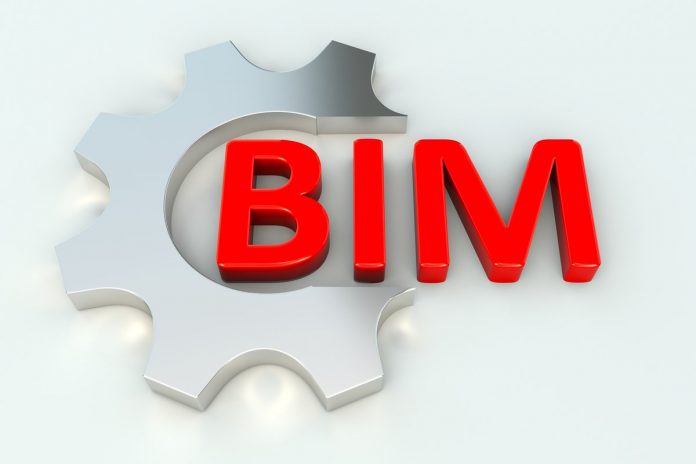Ben Malone, Director at BIM. Technologies tells PBC Today how the industry is embracing BIM Level 2, noting the challenges and the benefits of adoption
Implementing BIM Level 2 on a project is an achievable aim – there are a growing number of examples where it’s happening, but it takes a great deal of expertise, knowledge and experience. In this interview with Ben Malone of BIM. Technologies, we discuss the difficulties and challenges of delivering a true BIM Level 2 project.
Is there enough understanding within the industry of what BIM Level 2 means?
The simple answer to this is no. A recent report suggested around only 25% of the respondents were experienced working with BIM processes, and if you look at the wider industry as a whole, the figure will be significantly lower.
I would say the larger practices and contractors are now fairly capable and experienced when it comes to delivering on the requirements of most BIM projects, but the issue is a successful BIM project requires understanding and input from a wider variety of disciplines and suppliers.
Over the five years I’ve been working at BIM. Technologies, I have noticed a major shift in the industry and the understanding that most companies have of BIM. The right questions are now being asked, but I feel there is still a long way to go before the majority of project teams are truly capable and willing to deliver a BIM Level 2 project.
Do you think Level 2 projects are actually achievable?
Yes, there is no doubt that it is possible to successfully deliver a BIM Level 2 project – that is not to say that all projects with a Level 2 requirement actually deliver on this promise.
The standards and frameworks have been set out by the UK BIM Task Group and are available publicly. Although these standards and specifications, in my opinion, are often overly complicated, the information is available if individuals and companies are willing to learn and adapt. You are not able to ‘carry on with the way you’ve always done things’ if you want to truly work to the BIM Level 2 framework.
Projects also need to be carefully managed throughout. The role of the Information Manager is a crucial project role in ensuring that projects are delivered to the requirements; especially at this time when there is a lack of experience within many areas of the industry. Clients and main contractors need to understand that this is a crucial project lifecycle role, and not someone who can be brought into the project a month before the handover.
Is the BIM Level 2 mandate enough motivation to apply Level 2 on projects?
This depends on the projects that these companies will be working on. For those who are involved in the government framework and centrally procured projects, or for those who intend to be in the future, there is plenty of motivation – if they don’t, they will not be working on these projects for long!
For companies who are not likely to work on these types of projects, the Level 2 mandate has most likely still been a wake-up call. Many private sector clients and developers are following (and leading) the push for BIM on their projects, as they understand the benefits and efficiencies that these processes and technologies offer them. From my experience, it is these clients who understand the investment required and the reward in turn which comes from this investment.
Many projects, although not strictly Level 2 projects, are still using the fundamentals of this framework to improve the management and output which is delivered.
Why do we need to ensure projects are delivered to the exact requirements set out in the Level 2 mandate?
Aside from the mandate for all centrally procured government projects, my honest opinion on this is that they don’t. I am a staunch supporter of Level 2 and the work the government have done to push the guidance and support onto the industry, but from experience, most clients have their own specific requirements and uses for information, which inevitably override industry standards.
For centrally procured government projects, they should be delivered to the exact requirements to ensure consistency, deliver the same approaches to security, and accurate and concise information on their assets.
Unfortunately, even such projects are not always delivering to these requirements. This can be for a number of reasons, but from experience, clients are often persuaded by project teams that the information is not required; it exists in other formats, or that aspects of the project which require immediate attention are prioritised – which is understandable, projects need to be built! BIM Level 2 deliverables and information management is often still seen as a ‘nice to have’, rather than a requirement, and unless there is a requirement for projects to be Level 2 verified or certified, I can’t see this changing.
Should a certification and verification scheme be in place?
I think this needs to be seriously considered, especially on projects where Level 2 is mandated; but it’s not as simple as a quick check of information to ensure compliance to get a pat on the back and a gold star. It would be a complicated and somewhat manual process which would need a number of stages of verification and interrogation of project files and outputs. There has been talk of validation software for outputs such as COBie, but none of these have come to fruition, and even if in place, this is only a single output of the overall process.
This would then raise the question of who would be responsible for auditing this information. Would it be an external auditor, similar to getting BREEAM accredited and if so, who would pay for this?
Would it be the project’s Information Manager, or would this be a potential conflict of interest if fulfilled by an internal party? Should the role of the Information Manager need to be undertaken by an unbiased third party?
Unfortunately, certification brings up more questions and complications than already exist, especially when considering contracts and liability.
What would be your advice for people to gain greater Level 2 understanding?
Do your research! There’s a lot of information freely available to digest. The government Level 2 website is a good place to start to get a good fundamental understanding and find the relevant specifications and standards which are requirements of any BIM Level 2 project.
Read online blogs, network and talk to like-minded people.
Be willing to learn and be wrong. We’re all still learning and improving.
Once you’ve done all of the above, you’ve just skimmed the surface. To truly understand what is required and the obstacles you will face, you need to be hands on in delivering projects to the requirements.
The Level 2 suite of documents sets out the ‘correct’ way to deliver projects, but it’s important not to get hung up on the intricacies of these, and to focus on what is bringing real value to the project and your client.
I’ve yet to see a perfect example of a Level 2 project; I have however worked on a number of high-quality BIM projects with great outcomes and happy clients.
. . . . . . . . . . . . . . . . . . . . . . . . . . . . . . . . . . . . . . . . . . . . . . .

Ben Malone
Director
BIM. Technologies
Tel: +44 (0)844 800 6660
Twitter: @BIMTechnologies

















